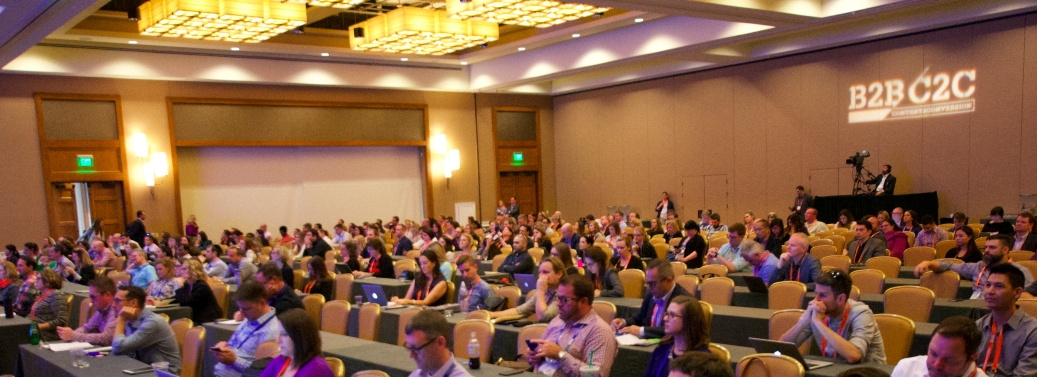Buyer centricity, measurement, influencer marketing and ABM were just a few topics covered during the first day of the 2017 B2B Marketing Exchange. In the opening remarks, members of the Demand Gen Report editorial team touched on some of the current key trends in the B2B landscape.
Among them, Content Strategist Alicia Fiorletta previewed stats from the publication’s Content Preferences Survey Report, set to publish in March. According to the preliminary findings buyers favor “S.I.M.” content:
- S: Shorter formats (92%)
- I: Interactivity (87%)
- M: Mobile friendly (86%)
However, there is a shift in buyer expectations around content experiences. Marketers must rethink content organization, make it easier to access and consume with content hubs and toolkits, as well as add star power through another trend we’ve been hearing a great deal about on the first day of the conference: influencer marketing.
Marketers are also still prioritizing demand generation and dedicating more budget to it, but budgets are increasing at a slower rate compared with last year. That signals a greater need for efficiency across B2B marketing teams as well as a better understanding of measurement and attribution. Marketers said measuring marketing’s impact is a top priority.
Day one also featured industry analysts, including Mary Shea, Principal Analyst, Forrester Research; Consultant Rebecca Lieb; and Kathleen Schaub, Vice President, CMO Advisory Service, IDC, discussing these trends and revealing new research and frameworks to address challenges.
“We’re already two decades into the 21st century, and I’m still scratching my head trying to understand why we still have a problem with marketing and sales alignment,” Shea said.
Today, B2B buyers are more empowered, and that has created many challenges on the marketing and sales front, according to Shea. “This includes the consumerization of the B2B buyer,” she noted. “Buyers expect vendors to serve up proactive recommendations, view credible peer reviews, and have it all in real-time.” That’s in the context of even more complexities that sales have to manage, including more stakeholders involved in the decision process and a longer buying cycle.
“To meet buyer needs, it’s time to move marketing contribution downstream for better alignment,” she said. “As marketers, you usually focus on looking outside. You have to focus on the sales enablement piece to align messaging and meet buyer expectations.”
According to research Rebecca Lieb co-authored, despite the surge in adoption of content marketing, 67% of marketers said measurement is their top challenge in content marketing. Lieb said in her session that this is because marketers tend to do content marketing without the underpinnings of a content strategy. “Content strategy answers the [questions]: why are we doing it, what’s our goal and how are we going to measure it?” Lieb said. “Content marketing and digital is a relatively new discipline, but that chief content officer is a very elusive beast.” She noted the big question is what exactly to measure.
“Marketers tend to resort to measuring volume rather than business results,” Lieb said. “Volume is likes, tweets, and retweets. All that stuff is nice but what does it really tell you? It’s not just about feeding the beast and creating more content. It’s about creating content that meets business goals that go beyond just sales. Sales are great but they’re not the only goal that can be quantified to a bottom line.”
Lieb advised tracking metrics including revenue generation, operational efficiency and customer experience to gain an understanding of what is impacting the business and in turn what marketers can tell C-level executives.
She had three recommendations for content marketers:
- Measurement must be the foundation principal of content strategy. There is no content strategy without metrics.
- Every measurement strategy must focus on the business outcome. Facebook likes are great, but you have to map them back to impact.
- Know your metrics and data. You need to know what’s possible to measure.
In her session during the Demand Gen Summit track, Schaub spoke about the need to blow up the funnel and approach demand gen in a new way. “The big difference between the top and the bottom (of the funnel) represents a big waste for marketing,” Schaub said. “Sales people still find it super frustrating. It’s not only a waste for marketers and frustrating for sales, but customers also don’t like it.”
Schaub said that “most advanced companies are now starting to look at different ways to approach demand. They’re asking for a new playbook and they’re not just making incremental improvement of different stages of the funnel.”







